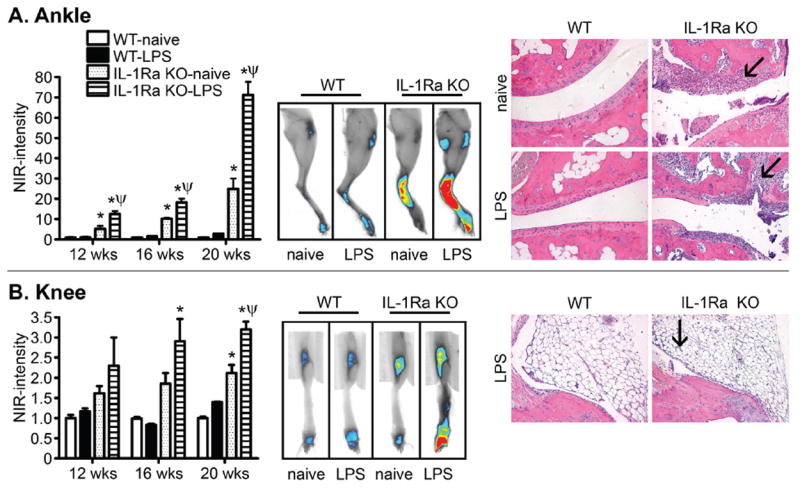Figure 1.

Interleukin 1 receptor antagonist (IL-1Ra) deficiency predisposes to more severe arthritis in the ankle than in the knee. The severity of inflammation in the ankle (A) or knee (B) was assessed in wild-type (WT) and IL-1Ra knockout (KO) mice with and without an intraperitoneal injection of 25 μg lipopolysaccharide (LPS) at 7 weeks of age. Left panels show quantification of the NIR fluorescence intensity from a ProSense inflammation marker. *p<0.05 for comparison between IL-1Ra KO and WT responses; ψp<0.05 for comparison between LPS-treated and naïve response within a genotype (n=8–10 mice/treatment/genotype/time). Middle panels show representative NIR fluorescence images of legs from the side to emphasise ankles or from the front to emphasise knees. The right panels show histological images of ankle or knee joints of mice at 20 weeks of age stained with H&E. Original magnification: ×200. Arrows indicate areas of signs of joint pathology in the ankle (ie, cell infi ltration, cartilage damage and destruction that is worsened by previous LPS exposure) or the knee (ie, minor proliferation of synovial membrane). Synovial and periarticular infiltration of inflammatory cells coincides with bone erosion (arrows).
